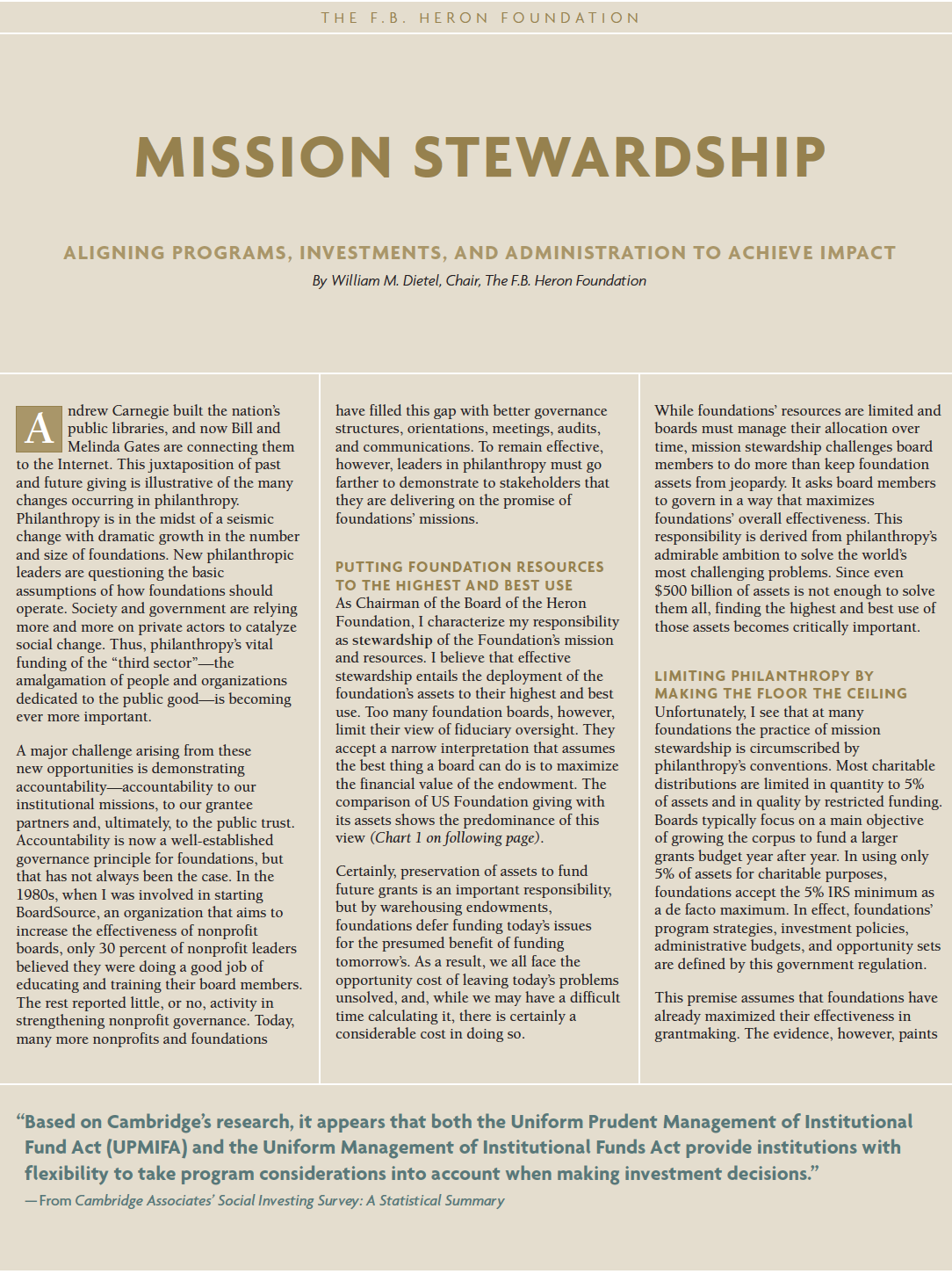Mission Stewardship: Aligning Programs, Investments, and Administration to Achieve Impact
An essay by Heron Board Chairman, William M. Dietel.
Andrew Carnegie built the nation’s public libraries, and now Bill and Melinda Gates are connecting them to the Internet. This juxtaposition of past and future giving is illustrative of the many changes occurring in philanthropy. Philanthropy is in the midst of a seismic change with dramatic growth in the number and size of foundations. New philanthropic leaders are questioning the basic assumptions of how foundations should operate. Society and government are relying more and more on private actors to catalyze social change. Thus, philanthropy’s vital funding of the “third sector”—the amalgamation of people and organizations dedicated to the public good—is becoming ever more important. A major challenge arising from these new opportunities is demonstrating accountability—accountability to our institutional missions, to our grantee partners and, ultimately, to the public trust. Accountability is now a well-established governance principle for foundations, but that has not always been the case. In the 1980s, when I was involved in starting BoardSource, an organization that aims to increase the effectiveness of nonprofit boards, only 30 percent of nonprofit leaders believed they were doing a good job of educating and training their board members. The rest reported little, or no, activity in strengthening nonprofit governance. Today, many more nonprofits and foundations have filled this gap with better governance structures, orientations, meetings, audits, and communications. To remain effective, however, leaders in philanthropy must go farther to demonstrate to stakeholders that they are delivering on the promise of foundations’ missions.
